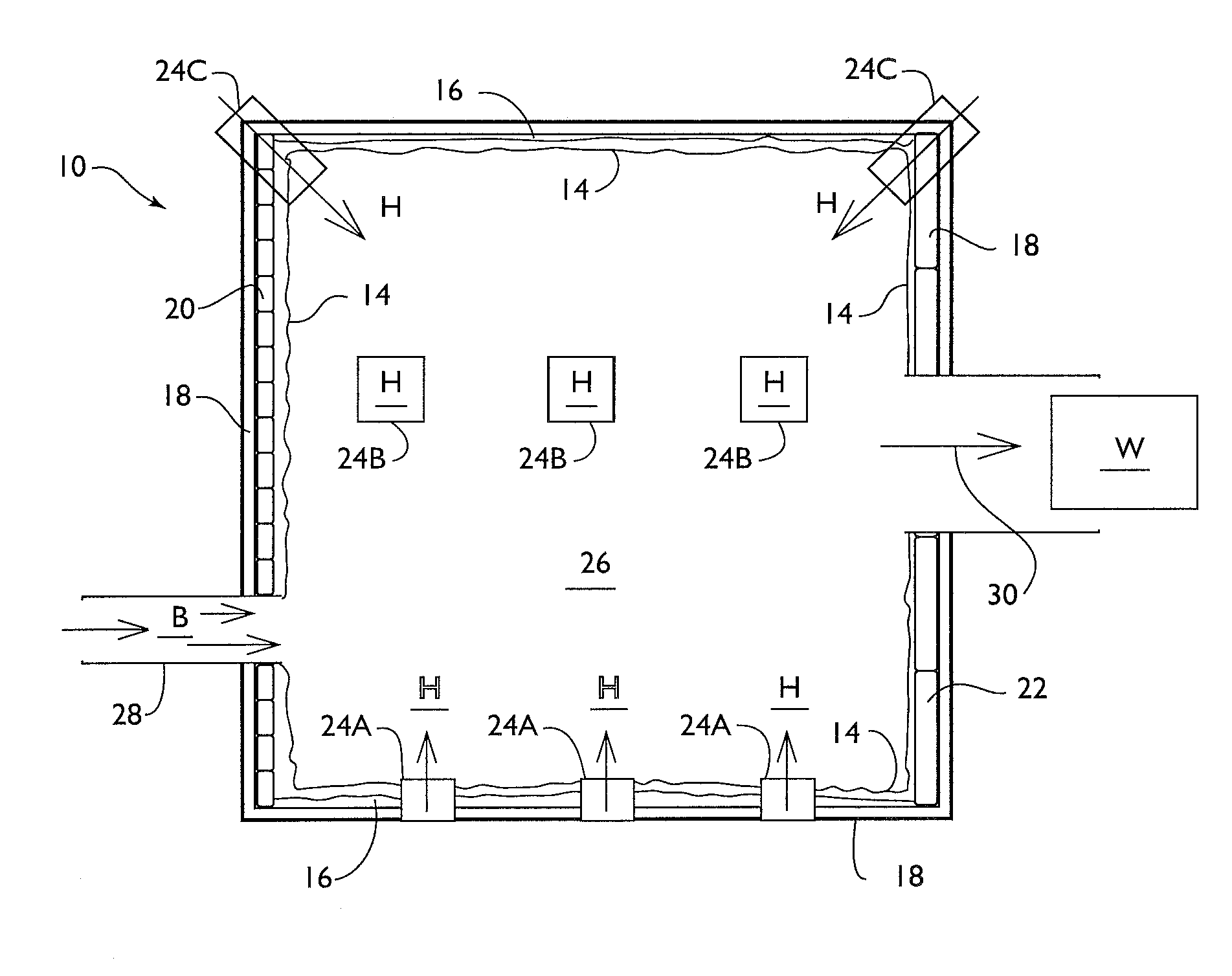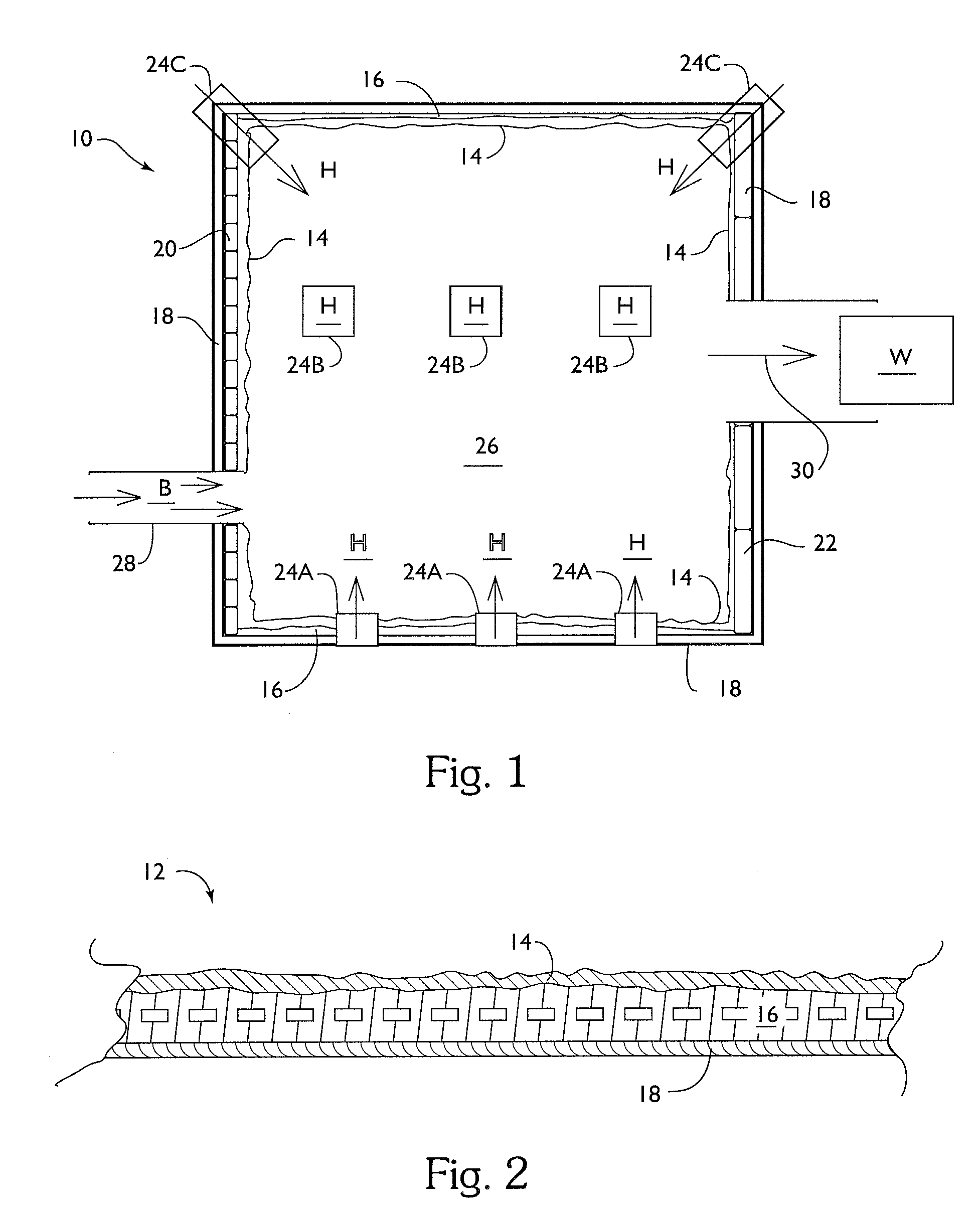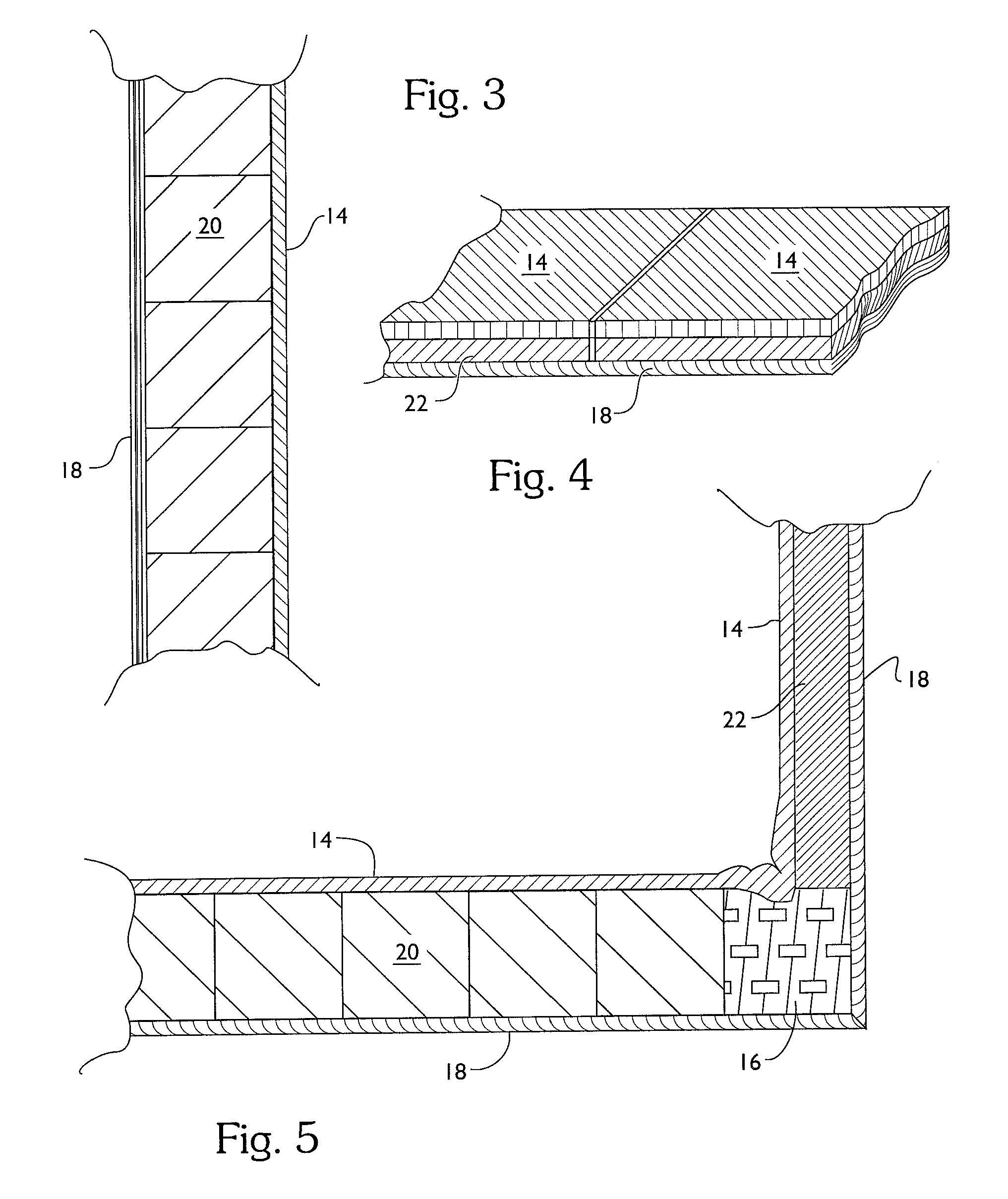Biomass Combustion Chamber and Refractory Components
a combustion chamber and biomass technology, applied in the field of biomass combustion chambers and refractory components, can solve the problems that the chambers themselves can affect the thermal and combustion efficiency of the load or fuel, and achieve the effects of improving the thermal and combustion efficiency of the biomass combustor, improving the efficiency of biomass combustion, and improving fuel utilization
- Summary
- Abstract
- Description
- Claims
- Application Information
AI Technical Summary
Benefits of technology
Problems solved by technology
Method used
Image
Examples
Embodiment Construction
[0025]A thermal protective layer 14 may be disposed on at least a part or all of the exposed refractory surfaces of a biomass combustion chamber 10. A generic biomass combustion chamber 10 is depicted in FIG. 1. In some combustion chambers 10, at least part of the combustion chamber 10 wall 18 is composed of a plurality of refractory bricks 20, refractory board 22, or refractory castable 16, and combinations thereof, disposed therein forming an exposed surface of the chamber 10. In other combustion chambers, castable or ceramic fiber is used to form the refractory surface of the chamber 10, as is well known in the art. Ignition burners 24A-C may be provided alternatively, and in combination, in the floor 26 at 24B, in the sides of the chamber 10 at 24A, or in the corners at 24C to ignite the biomass and to provide a supply of gas, such as air, to facilitate the combustion of the biomass.
[0026]The biomass B is fed into the chamber 10 using a conventional inlet 28. Although multiple i...
PUM
| Property | Measurement | Unit |
|---|---|---|
| emissivity | aaaaa | aaaaa |
| emissivity | aaaaa | aaaaa |
| emissivity | aaaaa | aaaaa |
Abstract
Description
Claims
Application Information
 Login to View More
Login to View More - R&D
- Intellectual Property
- Life Sciences
- Materials
- Tech Scout
- Unparalleled Data Quality
- Higher Quality Content
- 60% Fewer Hallucinations
Browse by: Latest US Patents, China's latest patents, Technical Efficacy Thesaurus, Application Domain, Technology Topic, Popular Technical Reports.
© 2025 PatSnap. All rights reserved.Legal|Privacy policy|Modern Slavery Act Transparency Statement|Sitemap|About US| Contact US: help@patsnap.com



